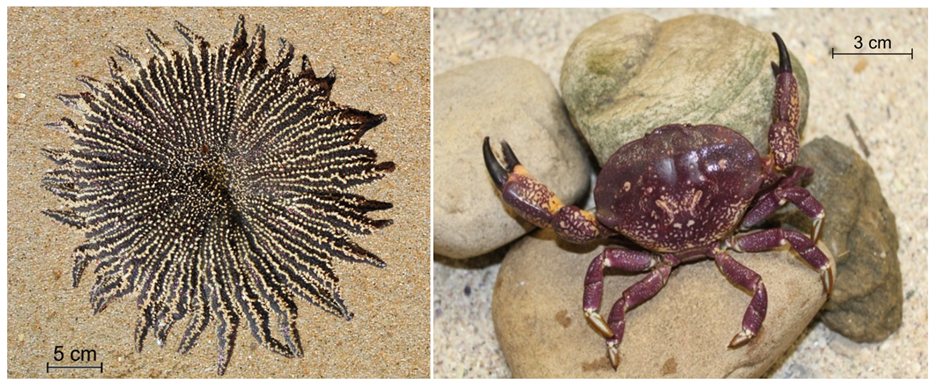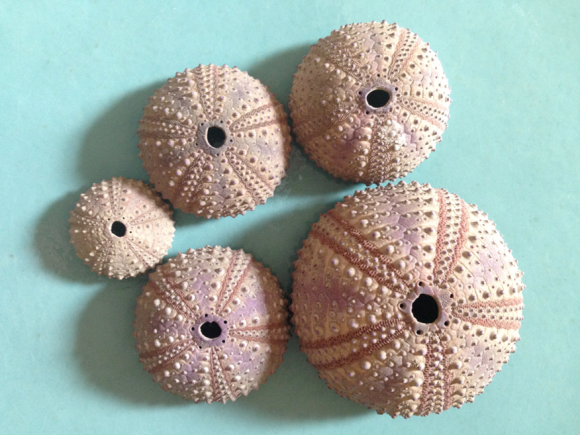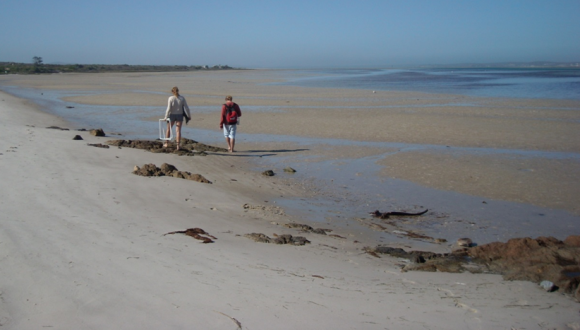31 October 2018 | By Koebraa Peters
A recent study published in BioInvasions Records, is the first to report two new marine alien species. The study was conducted by C·I·B post-doctoral associate, Koebraa Peters and C·I·B Core Team Member, Tammy Robinson, when an unusual looking seastar and crab were detected in Saldanha Bay, along the west coast of South Africa.

The South American multiradiate sunstar Heliaster helianthus and the Chilean stone crab Homalaspis plana are two invertebrates native to the west coast of South America. Both species were detected, on separate occasions, during maintenance of a pier in Saldanha Bay, in 2015 and 2017. Only one adult of each species was detected. Thereafter, intertidal and subtidal surveys were undertaken in surrounding natural habitats, but no further individuals were detected.
Native to intertidal and shallow subtidal waters of northern and central Chile and southern Peru, the multiradiate seastar feeds on mussels, including the Pacific mussel (Semimytilus algosus), a species from Chile that is already invasive along the South African coastline. The predatory seastar is a keystone species in its native range, where it plays a role in community structure of rocky shores.
“It has the potential to be invasive along our coastline, should it become established, it could pose a threat to native biota in these habitats, particularly as there are currently no predators regulating community structure in these habitats”, explains Peters.
The predatory crab, Homalaspis plana, is widespread along the Chilean coastline where it forms part of an important artisanal fishery. This crustacean lives in sheltered habitats and feeds on other crabs, barnacles, mussels and sea snails. As with the sea-star, it consumes the already present Pacific mussel. This species is less likely to survive along the wave exposed shores of South Africa but sheltered habitats would still be at risk, should the crab become established in the region.
The successful introductions of these three Chilean species along the west coast of South Africa, over the last 14 years, is important when considering the management of marine invasive species. All three species are likely to have been introduced through shipping, either as larvae in ballast water or as fouling on vessels. Although, it has been suggested that the Pacific mussel could also have been introduced with the importation of oyster spat from Chile.
Peters states that “there are strong links between the west coasts of South America and South Africa and as such we can expect additional species transfer between the two regions. There is even potential for reintroduction of the seastar and crab now that we know they can be successfully introduced into Saldanha Bay”.
She adds that “both shipping and the importation of oysters are important pathways that link these two regions and the similarities in environmental conditions also play a crucial role in the successful introductions.”
Both regions have cool temperate waters and experience coastal upwelling. Together, matching environmental conditions and the presence of two pathways makes Saldanha Bay particularly susceptible to invasions from the west coast of South America. It is therefore, essential for management authorities to consider this link and for both the multiradiate sunstar and the Chilean stone crab to be added to species watchlists, not only in South Africa, but also other regions that experience similar environmental conditions and those that have pathways and vectors associated with Chile and South Africa.
Read the full paper:
For more information, contact Koebraa Peters at koebraa@sun.ac.za


